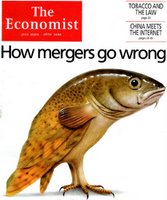
One of the justifications that the firm has for charging the rates is does is that they hire the best and the brightest through an exhaustive process that begins with recruiting at the very best schools of all kinds. While they traditionally have hired business school graduates, they also now take people from all academic backgrounds, including doctors, lawyers and engineers.
What I have found, is the one thing they all have in common is what McKinsey people call “smart.” The highest compliment that one can get from another McKinsey-ite is that “he/she is _really_ smart.”
This particular evaluation has always struck me as a bit peculiar, but not only because McKinsey is the first place that I heard it.
In other workplaces, I have heard other values being expressed: “he/she is really nice” or “he/she is really cool” or “he/she is really down to earth.”
But “smart” as the single most important attribute still sounds a bit strange to me.
Why so?
Maybe because I think that being smart is just not enough, if it ever was. Someone who is smart is able to do well on exams, solve complex problems, get good scores on tests, learn abstract theories, and do other IQ-based tasks with ease. They may even be articulate, well-spoken and have a tremendous vocabulary.
However, that is very different than having a high EQ – Emotional Quotient – which is defined very differently, and I think, perhaps even more important that just being smart.
From Daniel Goleman’s book on Emotional Quotient, he defined 5 emotional competencies:
- The ability to identify and name one’s emotional states and to understand the link between emotions, thought and action.
- The capacity to manage one’s emotional states — to control emotions or to shift undesirable emotional states to more adequate ones.
- The ability to enter into emotional states (at will) associated with a drive to achieve and be successful.
- The capacity to read, be sensitive to, and influence other people’s emotions.
- The ability to enter and sustain satisfactory interpersonal relationships.
These are not God-given skills, and thankfully they are unlike IQ-based skills in that they can be learned and developed.
In fact, the most potent consultants at McKinsey seem to be the ones who are committed to developing these competencies throughout their careers.
They might be the smartest McKinsey-ites of all.
P.S. To those who have been around the firm, the picture above is frighteningly typical!














